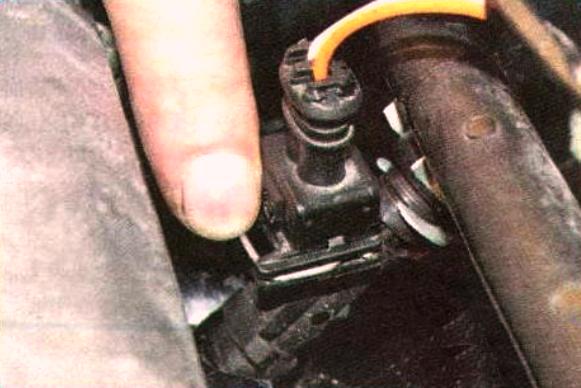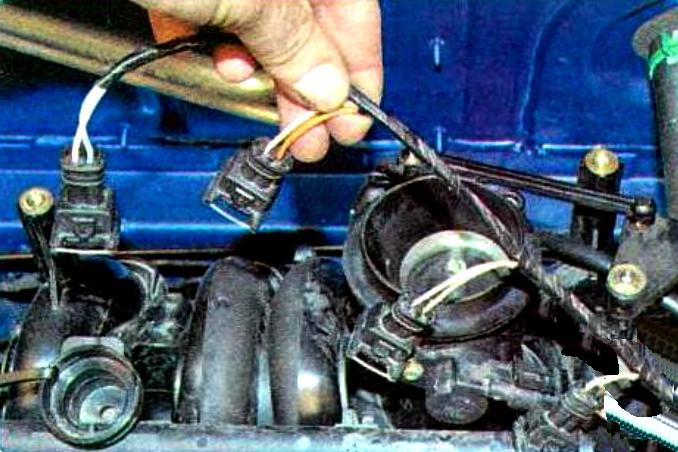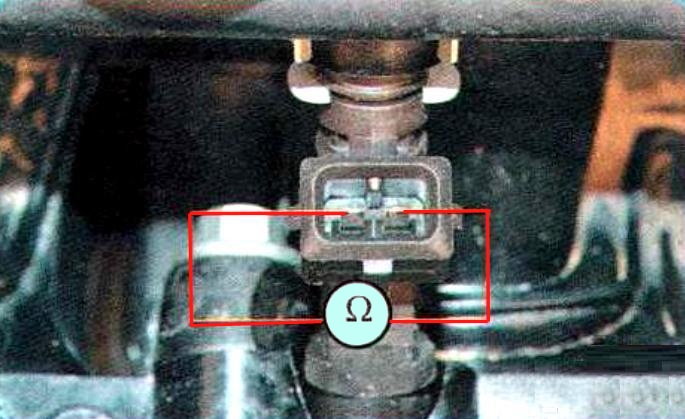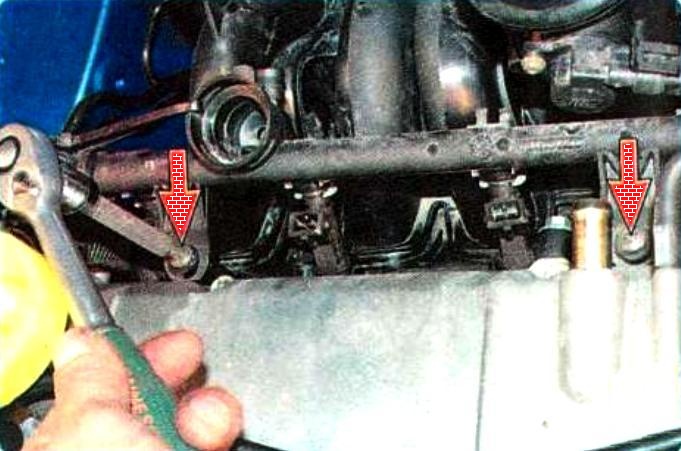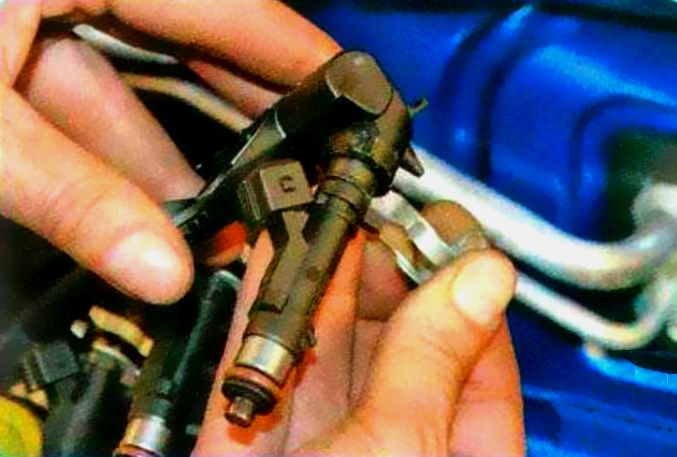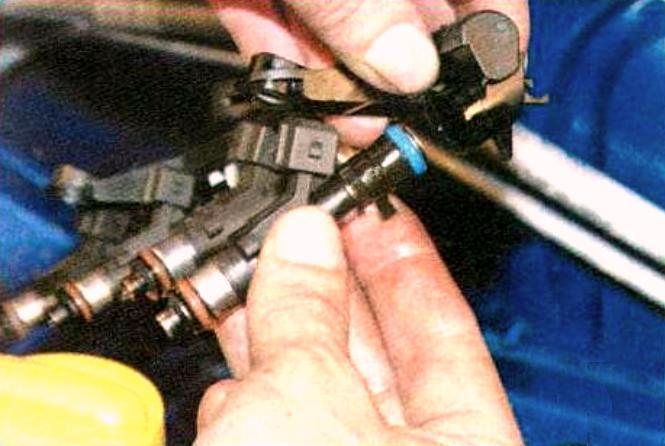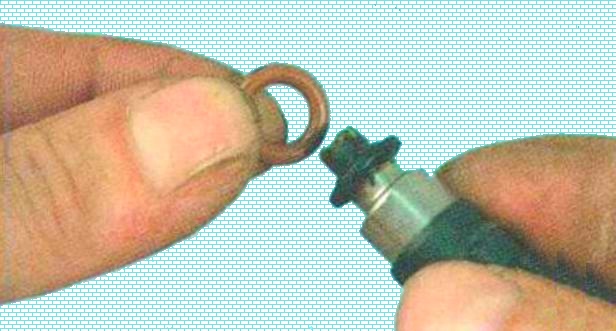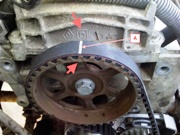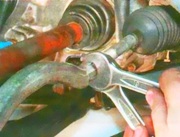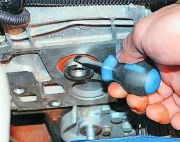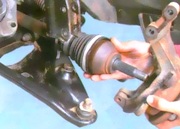Possible signs of injector failure:
- - difficulty starting the engine;
- - unstable engine operation;
- - stop the engine at idle;
- - increased idle speed of the crankshaft;
- - the engine does not develop full power, insufficient engine acceleration;
- - jerks and dips in the engine when the car is moving;
- - increased fuel consumption;
- - increased content of CO and CH in the exhaust gases;
- - glow ignition due to leakage of nozzles.
You will need; TORX key TZO, flat blade screwdriver.
Depressurize the supply system (see "Depressurize in the power system).
Remove the air filter (see "Removing and installing the air filter).
Squeeze the latch and disconnect the wiring harness block from the injector.
Similarly, disconnect the blocks from the remaining injectors and take the wiring harness to the side.
Using a car tester in ohmmeter mode, measure the resistance of the injector winding.
At 20°C it should be 12 ohms.
If the resistance of the injector winding is not correct, replace the injector, as it is beyond repair
Remove the two fuel rail mounting bolts.
Remove the rail by removing the nozzles from the holes in the intake pipe and without disconnecting the pipeline from the rail.
If any of the injectors remain in the intake pipe when removing the ramp, be sure to replace the retainer for this injector.
Pry off the retainer with a screwdriver and remove it.
Remove the injector from the fuel rail.
When removing the injectors, replace their rubber o-rings with new ones.
To replace the nozzle O-rings, remove them from the atomizer and from the nozzle body.
After installing new rings, lubricate them with engine oil
Install the parts in the reverse order of removal.







